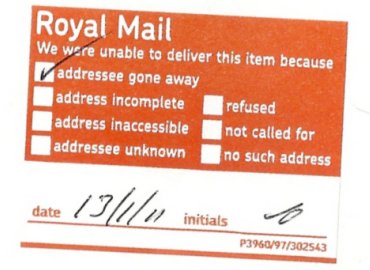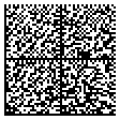 “Returned” or “Gone away Mail” is the generic term applied to mail that has been “Returned to sender” by the recipient or the Royal Mail.
“Returned” or “Gone away Mail” is the generic term applied to mail that has been “Returned to sender” by the recipient or the Royal Mail.
Why is mail returned and what is the impact?
The usual reasons for the mail being returned are:
- addressee has moved or is not known.
- addressee has died.
- addressee doesn’t want to receive the mail.
or, the Royal Mail can’t deliver the item because:
- Address is not known or is incomplete.
- There is a physical barrier to delivery (e.g. no letterbox).
Whatever the reason, large volumes of returned mail are expensive and can be detrimental to the public’s view of the sending company.
Target Media have the capacity to process over 20,000 items every day and have been providing a fast, efficient and cost-effective returned mail solution to companies of all sizes for over 15 years, resulting in less wastage, reduced costs and enabling PAS 2020:2009 compliance.
There are numerous benefits of this service:
Significant postage savings are made through working with cleaner data.
Minimised repeat and / or unnecessary mailing to ‘gone-away’ customers.
Brand image is protected and enhanced.
Lowered corporate carbon footprint.
Continual cleansing of customer databases.
How we provide the service
Returned mail is routed directly to us via a unique return address.
Mail is processed according to your specification (if required the mailing pack contents can be recovered and returned, or securely destroyed).
Any required data is captured from the mail and verified
The captured data is converted to a format suitable for your systems and delivered via secure ftp.
Every bit of waste material generated is recycled, helping you to improve your carbon footprint.
What data can be captured?
A wide variety of data can be extracted from every returned piece of mail. Typically we would use either optical character recognition (OCR) to read printed text from the mail or barcode scanning to capture more data.
OCR allows the capture of text ranging from from a simple customer URN (unique reference number) through to multiple data fields such as the full customer name and address. This method sometimes requires the mailer to be opened and the sheet holding the name, address, etc. to be extracted prior to scanning. Accuracy is largely dependant upon the typeface used and the quality of the printing. Some data is easier to verify and yields a higher accuracy level: for example a 16 digit customer reference number is usually better to capture than a name and address as the software only has to recognise the characters 0-9.
Capture of data from a barcode is much quicker and usually 100% accurate thanks to the checksums built into every 2d barcode. A simple 1d barcode (such as code 39) can be used to hold a string of about 10 characters in a fairly small space, while a high density 2d data-matrix barcode can contain up to 2335 characters – although this may be lower due to printable space restrictions. Not only does it hold more data, but a 2d barcode can also suffer damage/obstruction to up to 20% of the barcode and still be readable – this enables us to scan the barcode without opening the mailer thus reducing cost.

The data capacity of a 2d barcode just 1.5cm square would enable us to capture all the data below with room to spare:
Customer name and address
Alpha / numeric unique customer number
Campaign information
Order or account number
Mail out date
Data source information/identifier
Contact us to learn more about how we can help streamline your mailing activities
Click here to have us call you back!